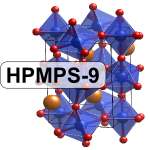The accretion of the Earth from primordial material and its subsequent segregation into a planet with core and mantle are fundamental problems in terrestrial and solar system. Many of the questions about the process are still open and much debated. For example, could the core be a reservoir for hydrogen, helium or other noble (rare) gases?
We have developed experimental techniques to simulate the conditions of the formation of the early Earth in a laser-heated diamond-anvil cell (LHDAC). We have studied Ne, He and Ar solubility and partitioning between metal and silicate liquids at high-pressure and temperature up to 20 GPa and 3000 K. Microanalysis of LHDAC samples with Ultra Violet Laser Ablation Mass Spectrometry (UVLAMP) provided for the first time a spatially-resolved depth profile in samples.
Our experimental results show that Ar and He solubility in silicate melts drops at high pressures [1,2]. More importantly, the discontinuous decrease of He solubility in CI-chondrite occurs at a pressure similar to that found for Ar suggesting that the dissolution of noble gases may not in fact be simply a function of effective size, and it is more likely that a single structural change in the host silicate liquid is the dominant factor in determining the solubility.
The experimental results show that helium would have partitioned early into the core during its formation and in proportion to their early abundance, creating a potential reservoir for 3He and 4He. Core He could clearly contribute to the mantle 3He-4He budget -- highlighting the exchange mechanisms at the core-mantle boundary through the 4.5 billion years of Earth's history.
In contrast, our experiments show that there is no evidence of important hydrogen incorporation into planetary cores, thus making unlikely for hydrogen to be a major light element of the Earth's core as previously assumed [3].
We will present and discuss our results on metal-silicate partitioning of He and H between chondrite model composition and iron-rich metal liquids up to 20 GPa and the implications that can have on Earth's global geodynamics.
References
[1] Bouhifd and Jephcoat (2006) Nature 439, 961-964.
[2] Bouhifd et al. (2013) Nature Geoscience 6, 982-986.
[3] Okuchi (1997) Science 278, 1781-1784.

 PDF version
PDF version
